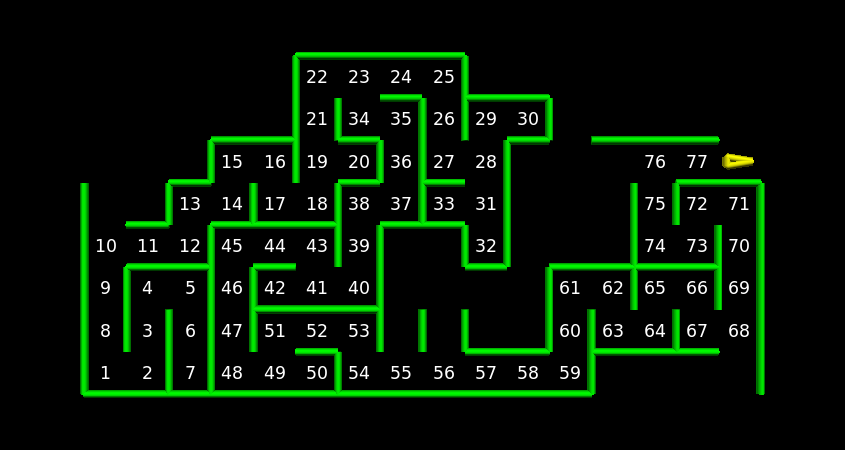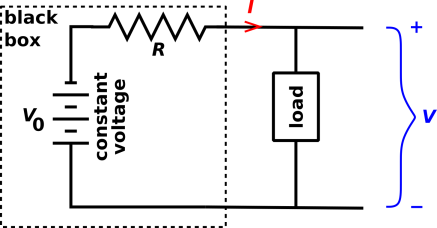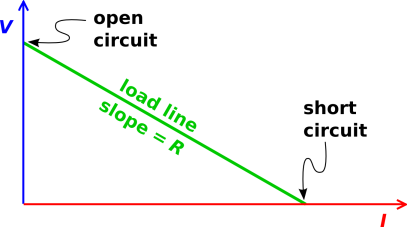The Spiral Approach to Thinking and Learning
John Denker
1 Introduction
Obviously you can’t learn (or teach) everything at once ... but you
have to start somewhere. This leads to two important questions: (1)
where to start, and (2) when to move on to the next topic.
To answer such questions, the only thing that has ever made sense to
me is the following:
Spiral approach: Learn a few rough ideas,
then spiral back, making connections between the ideas. Then
keep spiraling back again and again, gradually adding new
ideas, refining the ideas, and making more connections,
checking to see in what ways each idea is consistent (or
inconsistent!) with the others.
Therefore the answer to question (1) is that the starting-point
doesn’t matter very much. After a few trips around the spiral, nobody
knows or cares where it started.
Question (2) is super-important, because it will come up again and
again, every day for the rest of your life. Each time, the spiral
approach provides a partial (but not complete) answer. It says that
you do not need to master one topic before moving on to the
next. Plan on coming back.
The spiral approach stands in contrast to the 2000-year-old axiomatic
/ deductive approach, where topics are arranged in some monotonic
order, and the student is expected to master each topic before moving
on to the next. As discussed in section 4, the axiomatic
approach is a bad idea. The more rigidly it is applied, the worse it
is. It may seem elegant or rigorous, but it is not the way people
learn or think.
* Contents
2 Some Preliminary Examples
2.1 Long Multiplication
Suppose somebody wanted to learn long multiplication before they had
fully mastered basic short multiplication facts, aka the “times
tables”.
That’s actually not a problem. In the worst case, if they had to
refer to an actual non-metaphorical 10×10 short-multiplication
table while doing their long multiplication exercises, it would not be
the end of the world. It would slow them down, but not fatally.
Forsooth, the shoe is pretty much on the other foot: Doing a bunch of
long-multiplication problems provides opportunities, motivations, and
reasons to learn the basic short-multiplication facts.
The point here is simple: It is absolutely not necessary to master
things at one level before moving on to the next level. Any topic of
real importance will come up again and again, in various natural
contexts, so there will be lots of opportunities to refine the ideas.
This is sometimes called successive refinement. It is also called the
spiral approach.
2.2 Equivalent Circuits
Consider the following two-part story:
- At one school, the professor walked into the room and drew three
diagrams.
Pointing to various features of the diagrams, he said something like
“Open-circuit voltage, short-circuit current, linear circuit, two
points determine a line. Thévenin equivalent, Norton equivalent.
Same black-box behavior. Useful. Know it.”
The whole presentation took only a minute or two. Nothing more needed
to be said that day. Many of his sentences didn’t even have verbs.
In particular, he did not take time to make sure that the
students mastered the concept before moving on.
The students looked at his diagram and nodded. Open-circuit voltage.
Short-circuit current. Two points determine a line. Sounds
reasonable. Sounds useful.
In the unlikely event that some student initially acquired a defective
understanding of such circuits, that defect would have been cured
naturally sooner or later, probably sooner, because equivalent
circuits are indeed useful, and get used again and again and again.
One of my favorite sayings is:
|
Utility is the best mnemonic.
|
|
|
|
That is to say: Stuff that gets used gets remembered.
- At another school, the same subject was handled very
differently. The professor lectured on and on about Thévenin
equivalents, Norton equivalents, wye-delta transformations, blah blah
blah ... for 90 minutes! He figured it was an important topic, and he
wanted to make sure everybody understood it before moving on.
Just to make double-especially sure everybody understood it before
moving on, he assigned hours of homework on the subject. Students
were required to analyze some cockamamie circuit with lots of
resistors and lots of batteries.
Just to make triple-extra sure that everybody understood it before
moving on, there was a big lab assignment. Students were required to
actually build the cockamamie circuit and measure it, comparing
against the Thévenin and Norton predictions. For at least two
idiotic reasons (as discussed in section 7.2) the
observations did not match the predictions.
The upshot was that these students came away with the idea that
Thévenin and Norton equivalents were horribly complicated and
useless.
So you see, the two schools led their students to dramatically
different conclusions.
The point of this parable is simple: It is absolutely not necessary
for students to master an idea before moving on. Instead, one can use
the spiral approach: Introduce the subject lightly, then move on to
other topics, then come back and revisit each topic, tying everything
together. If the supposedly-important ideas really are important,
they will come up again and again, in the normal course of business.
As the travel guidebooks say: When planning a trip to the big city, do
not plan on seeing every single museum on your first trip. Assume you
will come back. Assume your first trip is not the only trip.
3 Good: Spirals, Stair-Steps, Tapestries, Building Blocks, Mazes, and Indirect Solutions
3.1 Peek at the Big Picture
Most of this article is about how to take a complex topic apart and
then, later, put it back together. However, in some situations,
especially with students who are seeing the topic for the first time,
it pays to provide some sort of overview / survey / synopsis.1 This is analogous to peeking at the picture on the box that
the jigsaw puzzle came in. It provides some perspective and some
indication of how the various pieces fit into the big picture. This
helps motivate folks to learn about the pieces.
This involves some tricky judgment calls, because there are limits.
Sometimes the big picture can be intimidating and overwhelming.
3.2 The Spiral Approach
When it comes to learning (and teaching), it doesn’t pay
to worry too much about the order in which ideas are presented.
Instead, it makes sense to use a spiral approach. That is, we
start by mentioning a bunch of rough ideas, including some
applications as well as some fundamental building-blocks. Then we go
over everything again, making connections between the ideas, refining
the ideas, discussing things in more depth, and introducing some new
ideas. And so on, iteratively.
By the time you have made the Nth turn around the spiral, nobody
cares – or even remembers – where you started.
See reference 1 for an insightful discussion of how
thinking and problem-solving are done. This includes an interesting
specific example, namely proving the unique-factorization theorem ...
but the process is even more interesting than the result. Also
reference 2 is a classic, highly-regarded discussion of
problem-solving techniques. Additional discussion can be found in
reference 3.
3.3 The Stair-Step Approach
I like to tell students:
You’re not Superman, and I’m not Superman
either. I can’t teach you how to leap tall buildings in a single
bound. I can however show you where the stairwell is. We can get to
the top one step at a time.
3.4 Tapestries
Feynman compared knowledge to a grand tapestry. Any unknown fact is
like a hole in the tapestry. The hole can be repaired by weaving
upward from the bottom, downward from the top, or inward from the
sides. I would go even farther and point out that you can start in
the middle of empty space and weave new fabric from scratch, and then
patch it into to the main tapestry later. Furthermore, real
problem-solving involves a great deal of exploring avenues that turn
out to be dead ends, and then back-tracking.
Actually there are even more options than that, because the network
of knowledge is very high-dimensional, not just two-dimensional like
a tapestry. Ideas are connected in many, many different directions.
3.5 The Building-Block Approach
|
In introductory textbooks, many of the end-of-chapter problems can be
solved in a single step. Because there are so few steps involved,
there are few things that can go wrong.
Similarly, on the fill-in-the-bubble tests that receive so much
emphasis these days, any question that cannot be solved in a single
step is probably not worth bothering with.
|
|
This stands in contrast
to real-world tasks, which are exponentially more complicated. For
instance, one of my hobbies is teaching people to fly airplanes. When
you are landing the airplane, there are at 12 major things you need to
keep track of, and at least 312 ways that things can go wrong.
That’s a rather big number, more than half a million. Furthermore,
there is time pressure: all 12 variables must be controlled in real
time.
|
When teaching real-world skills, it is essential to use the
building-block approach. That is, we break the overall task
into modules, into small building-blocks. Then we teach a few of the
blocks in isolation, and then gradually combine them, two at a time,
then three at a time, et cetera. Then we spiral back and add a few
more blocks. Eventually we combine everything to create the final
complete edifice.
The wise teacher will not only use this approach, but explain the
process, so that students can internalize it. That is to say, the
topic of problem-solving skills is worth discussing explicitly.
Later, when they are on their own, when they encounter a hard problem,
students will be prepared to chip away at it, breaking it into a large
number of manageable sub-problems, and then combining the sub-results.
The final step – putting things together – must not be omitted.
Dealing with the blocks one by one is a fine place to begin, but it is
not an acceptable place to end!
The maze metaphor is discussed in reference 4.
 Figure 5
Figure 5: Maze, as a Metaphor for How Research is Done
3.7 Multiple Solutions and Indirect Solutions
As a general rule:
There is More Than One Way of Doing It.
TiMTOWoDI.
|
|
|
|
With rare exceptions, the teacher should not require that a problem be
solved a particular way. Non-standard methods should be tolerated,
within reason. There is a continuum, ranging from creative, indirect,
roundabout, or peculiar to outright bizarre and perverse.
If you want to give students practice with a particular method, choose
examples where that method is clearly preferable. If the method is
any good, such examples should be easy to find.
For the next level of detail, see reference 5.
4 Bad: Traditional Axiomatic Approach
The spiral approach is dramatically different from what might be
considered the “traditional” axiomatic approach. Consider
the following contrast:
|
Some folks may be motivated to learn just by the love of
learning.
|
|
Others require more motivation. For example, they may
want to see some practical applications.
|
|
Some folks are very patient and trusting. They believe it
when they are told that the stuff they are learning will be useful
somehow, some day.
|
|
Others are more impatient and skeptical. They
start out skeptical as children, and become more and more skeptical as
they grow up. In my opinion, this is entirely reasonable.
|
|
According to legend, Euclid mocked a beginning student who
dared to ask what geometry was good for. See section 7.1.
|
|
I say students should ask what stuff is good for, and demand straight
answers.
|
For approximately 2300 years, in school in general and in
math class in particular, the typical practice has been to assume that
the following three things are equivalent:- The order in which things are done when publishing
a formal proof.
- The order in which things are done when solving a
problem.
- The order in which things are learned.
|
|
There is not the slightest evidence that such things
are equivalent.
A textbook must therefore have three separate goals: Teaching some
existing facts, teaching people how to think, and teaching people how
to formalize the results for publication. These are three very
different tasks.
|
|
When publishing a formal proof, you start with the axioms,
use that to prove some lemmas, use that to prove some simple theorems,
use that to prove some fancier theorems, and so forth. At the very
end, after you have learned all the tools, you might get to see some
real-world applications. It’s all very straightforward.
|
|
In the real
world, you almost never know what tools might be useful until
after you have seen the problem. When a hard problem lands on your
desk, it is a mad scramble to gather possibly-useful tools and learn
possibly-useful techniques. You won’t know which tools were
actually needed until after the problem is fully solved. There
is nothing straightforward about it.
|
|
This can be called the Euclidean axiomatic / deductive
approach.
|
|
|
|
This approach works fine if all you want to do is check the
correctness of a given completed proof.
|
|
This is almost never the
right approach if you are faced with a problem and trying to invent a
solution, as pointed out in e.g. reference 2.
|
|
|
|
It is also almost never the right approach to learning
(or teaching) a given subject.
|
|
The strictly deductive approach may be an elegant way of
formalizing a mathematical result for presentation in a scholarly
journal.
|
|
It is not how new, original mathematical results are
obtained, and it is not how mathematical ideas are learned, especially
at the introductory level.
|
Furthermore: Just because the straight-forward approach is bad does
not mean that the straight-backward approach is good. As usual,
all the extremes are wrong. For learning and teaching, some version
of the spiral approach and/or the building-block approach is usually a
good idea, as discussed in section 3.2 and section 3.5. In a more general problem-solving situation, where
there is no teacher (i.e. no one who knows what the right answer is)
the situation is even more fluid. You have to come at the problem
from many different angles.
5 Expertise versus Automaticity
5.1 The Bone Analogy
Some folks (including Sal Khan) argue against the spiral approach.
They assert that it is vital to achieve a a «solid» understanding of
one topic before moving on to the next. They consider a non-solid
understanding to be dangerous. Khan explicitly compares it to a
broken bone.
I apply the bone analogy differently: Real bones have hollow parts
and, even more remarkably, cancellous parts, as shown in figure 6 (from reference 6).
Cancellous bones (aka cancelate bones) work better than any
corresponding «solid» bone would work, in terms of
strength-to-weight ratio, growth rate, and other critical measures.
Non-metaphorically speaking, even if you think a «solid»
understanding is the ultimate goal, it is better to lay down a
preliminary cancellous structure, and then spiral back to fill in
whatever gaps really need filling. In terms of pedagogical
sequencing, the only thing that has ever made sense to me is the
spiral approach. Don’t assume that the first exposure to a topic will
be the last.
5.2 Professionals versus Automatons
Here’s another example, namely US Airways flight 1549, the one that
ended up in the Hudson River. This is a case where we can sharply
compare automaticity versus expertise and professionalism.
|
There were some actual automatons in the cockpit, notably the
autopilot, the ground-proximity warning system (GPWS), and the
alpha-protect system.
|
|
In contrast, there were also a couple of
professionals in the cockpit.
|
Take a guess: Who saved the day? The automatons, or the professionals????
- The autopilot was not turned on at the time of the bird strike.
The First Officer was hand-flying the plane. The pilots could have
turned on the autopilot, but they didn’t bother, and it would not
have made much difference either way. It would’ve taken about the
same amount of effort to tell the autopilot what do as to just do it
by hand. If they had switched it on, they would have had to switch
it off about a minute later.
- The GPWS was turned on by default, as usual. It got left on. All
it did was generate unhelpful nuisance warnings. In the aftermath,
the NTSB recommended adding to the emergency checklist an item about
turning off the GPWS. That’s serious business. You don’t lightly
add items to an emergency checklist.
- The alpha-protect system was on and could not be turned off. The
A320 is a fly-by-wire aircraft, and the computer gets the final say.
It made things worse: In the last seconds of flight, the pilot
commanded the plane to raise the nose another degree or so and the
airplane did not respond, because the alpha-protect system would not
allow it.
In summary, I score the automatons 0-2-1: No wins, two losses, and
one tie.
Now what about the pilots? Do you think they were drill drill drilled
to achieve “automaticity”? If so, you do not understand the job.
Really not.
Sure, they were trained to know the emergency checklists by rote
... but they were also trained to understand every item on the list at
a much deeper level. The two types of learning are not mutually
exclusive. All of the rote stuff the First Officer knew was
unnecessary in this case, because he had the Quick Reference Handbook
to follow. What’s more, virtually all of the QRH was irrelevant! The
engine-restart procedures assumed the engine quit at altitude,
allowing plenty of time for a restart. Step 3 on the checklist
involved waiting for 30 seconds. Think about that. The total time
from bird strike to touchdown was one minute and 15 seconds. The
First Officer skipped the 30-second wait step. An automaton would not
have. On the other hand, he never made it past step 4, because both
engines were completely ruined. (He had no way of knowing they were
ruined, so it made sense to attempt the restart.)
They crew didn’t even make it as far as step 0 of the ditching
checklist ... and wouldn’t have been able to complete the checklist
anyway. And no automaton could have done better. An automaton can
only do what it is programmed to do, and nobody had ever contemplated
making a ditching decision on such short notice.
So this is why you need experts and professionals. They went
off-script. Waaaay off-script. I’ll concede the pilots exhibited
“some” elements of more-or-less “automatic” behavior. For example,
the autopilot could have kept the aircraft right-side-up,
automatically. The pilot was able to do the same thing,
subconsciously, “automatically” if you will ... but that’s not the
interesting part of the story. The interesting part is all the
non-automatic stuff he was doing at the same time.
Sure, those guys were experts. They were well trained. However, the
objective and result of the training was not automaticity. Not even
close.
6 Showing the Work, versus Polish
Here’s another set of contrasts for you:
|
At a typical university, there is a “Composition and
Orchestration” course. Music majors are required to take this
course. It is a very demanding upper-division course.
|
|
Typically
there is also a “Music Appreciation” course. The students are not
musicians. They listen to a performance of the music, and then
discuss what they’ve heard. This is not a very demanding course.
Music majors are not allowed to take this course, not for credit
anyway.
|
Let’s be clear: Listening to a piano sonata is one thing. Performing
one is something else entirely. Composing one is something else yet
again.
|
Gauss made a point of removing any trace of the process by which he
reached his results. He justified this by saying, that no architect
would, after completing a building, leave the scaffolding in its
place.
|
|
|
|
Gauss’s approach might make sense if you think you are
performing in front of an audience. That would make sense in the
context of a superficial “math appreciation” course.
|
|
It makes no
sense if you want learn how math is actually done, if you want to be a
performer or (gasp) a composer ... or if you want to teach such
skills.
|
I mention this because in some fields, the textbooks tend to be
elegant and highly polished. This has been the practice for thousands
of years, continuing to the present day. They discuss the most
elegant solution, without discussing how the solution was actually
found, i.e. the messy process of proceeding upward from the bottom,
downward from the top, inward from the sides, and outward from the
middle, with lots of back-tracking, finding an inelegant solution
and then gradually refining it.
In the real world, in any sort of engineering situation, you are
required to show the work. That includes keeping the scaffolding in
place, or at least keeping it close at hand. This is often not easy
to do, but it is required so that others can validate, maintain,
repair, reuse, and extend your work. For the next level of detail,
see reference 7.
7 Appendix
7.1 Don’t Mock the Student
According to legend (as quoted in reference 8), a new
student of Euclid’s once asked him, “What shall I get by learning
these things?” In reply, Euclid beckoned his slave and told him,
“Give him a coin, since he must make gain out of what he learns”.
This is a horrifying story. A student who asks what something is good
for should be encouraged. A student who asks how something fits into
the big picture should be encouraged. Teachers should be prepared to
answer such questions. Euclid may have been a good mathematician, but
in my opinion he was not a good teacher, if the legend is to be
believed. In any case, apart from the legend, Euclid’s book says
almost nothing about motivations or applications.
7.2 Cockamamie Circuit
In case you were wondering how it was possible to screw up something
so simple as Thévenin and Norton equivalents, as discussed in
section 2.2, here’s next level of detail.
The school was too cheap to buy 1% precision resistors, which cost
about a penny apiece. They thought their students didn’t deserve that
kind of luxury. So they used 10% resistors instead. The cockamamie
circuit contained a large number of resistors, so the uncertainties
accumulated. What’s worse, the assignment required students to
measure a voltage that was a small difference between large numbers,
which made the relative uncertainty enormous.
Secondly, although the homework calculation used ideal batteries as
voltage sources, the lab project used bench power supplies. It turns
out that a battery puts out a more-or-less constant voltage over a
wide range of positive and negative currents, whereas an electronic
power supply does not tolerate negative currents. As Murphy’s Law
would have it, the cockamamie circuit was trying to run negative
current through one of the power supplies. So the observed behavior
of the circuit bore absolutely no resemblance to the homemwork
calculation.
8 References
-
-
Timothy Gowers,
“Proving the fundamental theorem of arithmetic”
https://gowers.wordpress.com/2011/11/18/proving-the-fundamental-theorem-of-arithmetic/ -
George Pólya,
How to Solve It: A New Aspect of Mathematical Method
1st edition (1945), 2nd edition (1957), Princeton University Press
-
John Denker,
“Principles of Teaching and Learning”
www.av8n.com/physics/pedagogy.htm -
John Denker,
“How Research is Done :
Exploring a Maze using only Local Information”
www.av8n.com/physics/research-maze.htm -
John Denker,
“Taking an Indirect Approach”
../education/indirect-approach.htm -
medicalpicturesinfo.com,
“Cancellous Bone”
http://medicalpicturesinfo.com/wp-content/uploads/2011/09/Cancellous-Bone-4.gif -
John Denker,
“Suggestions for Writing Good Software”
../computer/htm/good-software.htm -
Marvin Jay Greenberg,
Euclidean & Non-Euclidean Geometries: Development and History
2nd edition, W.H. Freeman and Co., New York (1973) pp. 7-8.





